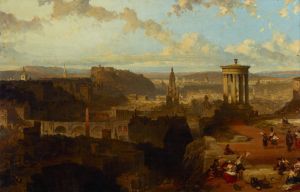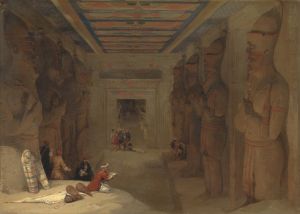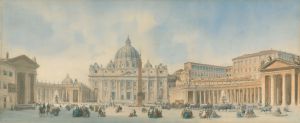
The Great Temple of Aboo Simble. Nubia.
A hand-painted replica of David Roberts’s masterpiece The Great Temple of Aboo Simble. Nubia., meticulously crafted by professional artists to capture the true essence of the original. Each piece is created with museum-quality canvas and rare mineral pigments, carefully painted by experienced artists with delicate brushstrokes and rich, layered colors to perfectly recreate the texture of the original artwork. Unlike machine-printed reproductions, this hand-painted version brings the painting to life, infused with the artist’s emotions and skill in every stroke. Whether for personal collection or home decoration, it instantly elevates the artistic atmosphere of any space.
"The Great Temple of Aboo Simble, Nubia" is a lithograph created by the Scottish artist David Roberts in 1839. This artwork is part of Roberts' renowned series of lithographs titled The Holy Land, Syria, Idumea, Arabia, Egypt, and Nubia, which was published between 1842 and 1849. The series is celebrated for its detailed and romanticized depictions of the Middle East and North Africa during the 19th century.
The lithograph portrays the Great Temple of Abu Simbel, one of the most iconic monuments of ancient Egypt. Located in Nubia, southern Egypt, near the border with Sudan, the temple was originally built during the reign of Pharaoh Ramesses II in the 13th century BCE. It is dedicated to the gods Amun, Ra-Horakhty, and Ptah, as well as to Ramesses II himself. The temple is famous for its colossal statues of the pharaoh seated at its entrance, which are carved directly into the sandstone cliffs.
David Roberts visited the site of Abu Simbel during his travels in Egypt and Nubia in 1838-1839. His journey was part of a larger expedition to document the region's ancient monuments and landscapes. Roberts sketched the temple on location, capturing its grandeur and the surrounding environment. These sketches were later transformed into detailed lithographs by Louis Haghe, a prominent Belgian lithographer, under Roberts' supervision. The lithographs were printed in hand-colored editions, which added to their popularity and artistic value.
Roberts' depiction of the Great Temple of Abu Simbel is notable for its accuracy and attention to detail. The lithograph shows the four colossal statues of Ramesses II at the temple's facade, with smaller figures of his family members positioned between his legs. The artwork also includes elements of the surrounding landscape, such as the Nile River and the desert, emphasizing the temple's remote and majestic setting.
The publication of Roberts' lithographs played a significant role in introducing European audiences to the ancient monuments of Egypt and Nubia. His works were highly influential in shaping Western perceptions of the region's cultural heritage during the 19th century. Today, "The Great Temple of Aboo Simble, Nubia" remains an important historical record of the site before the relocation of the temple in the 1960s due to the construction of the Aswan High Dam.
Roberts' lithographs are widely regarded as masterpieces of 19th-century Orientalist art and continue to be studied for their artistic and historical significance.









![Excavated Temple of Gyrshe [Gerf Hussein], Nubia.](/imgs/217480/s/david-roberts-excavated-temple-of-gyrshe-gerf-hussein-nubia-fb4767b0.jpg)
![Karnac [Karnak]. Nov. 29th, 1838.](/imgs/217502/s/david-roberts-karnac-karnak-nov-29th-1838-8df2346d.jpg)
![One of two colossal statues of Rameses [sic] II. Entrance to the Temple at Luxor.](/imgs/217522/s/david-roberts-one-of-two-colossal-statues-of-rameses-sic-ii-entrance-to-the-temple-at-luxor-473c42e1.jpg)
![Portico of the Temple of Edfou [Idfû], Upper Egypt. Nov. 23rd, 1838.](/imgs/217527/s/david-roberts-portico-of-the-temple-of-edfou-idfu-upper-egypt-nov-23rd-1838-79b6cf5b.jpg)
![Siout [Asyût]. Upper Egypt.](/imgs/217539/s/david-roberts-siout-asyut-upper-egypt-88ace28b.jpg)

